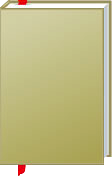

 |

|

The average rating for Content Outline for Teaching (Indiana Science) based on 2 reviews is 4 stars.
Review # 1 was written on 2014-01-23 00:00:00 Gaye Conway Gaye ConwayI first read Colin Kapp's 'The Patterns of Chaos' way back in my late teens and had never expected to find it in print again... but happily like a number of other old science fiction books it has been resurrected, in this case as part of a Gollancz programme. I approached it with some trepidation in case it had survived the years less well than I, but in fact it still reads very well. The main technology drawback is that like so many other people of the time (early 1970s), Colin could not conceive that computers would have any means of input other than keyboards, nor output other than reams of paper. So the otherwise highly advanced devices used to calculate starship trajectories through both space and subspace, identify and trace causes of tiny ripples in entropy, track weapon sources and targets across enormous distances, and so on, are forever producing vast hand-outs from printer or plotter. No spoken input or visual output here! Of course that is a secondary issue. At the heart of this book is a fascinating question. If as a rule entropy (the tendency of the universe to become disordered) increases, but we know that the efforts of intelligence can make it decrease - are there particular individuals who can make this happen more dramatically? Is it possible for some people to interpret or intuit the patterns of chaos more accurately, and so shape events more dramatically and purposefully? What would it be like to be around such a person? Colin has made a valiant and credible attempt to tackle these questions, all wrapped up in a complex political and military plot on a very large scale. What seems at first to be a straightforward exercise to infiltrate a commando into an enemy base turns out to have much deeper and more sinister causes. We follow alongside the commando (Bron) throughout the book, but key information is withheld from us as readers by the device of him having lost his memory shortly before the action commences. It's a bit artificial, but it does mean that we learn the real significance of events at the same time that Bron does. It's an exciting read, and one I was very happy to revisit, but I don't think I can give it five stars. The technology, and the very interesting philosophical issues raised by questions about entropy, considerably outweigh the human dimensions. There's is little character development (other than the steady recovery of memory), and the consistent style of sticking with Bron's perspective means that we get no real chance to see the world through the eyes of others. Nowadays I prefer more variety of viewpoint, and find this aspect of 'The Patterns of Chaos' a little disappointing. However, as an example of good science fiction writing by a British author, it is well worth the read. Four stars from me. |
Review # 2 was written on 2017-12-28 00:00:00 James Snowden James SnowdenThis science fiction novel was a book club selection. It's nominally a space opera, but it covers a lot more ground than that label would suggest and actually has quite a high idea-to-page ratio, which is always something I admire in SF. The story opens in media res with the main character, Bron, trying to move through a city that's under orbital bombardment. We soon learn that Bron is a secret agent. He's not alone, but mentally linked to a team of handlers located on a distant outpost who are connected to him at all times. Bron is, in effect, what he refers to later in the book as the meat component of a geshtalt entity. Bron has a problem at the beginning of the book in that he lost his memory in a concussive blast a few moments before the book starts, and must now play serious catch-up. Bron's mission is to infiltrate the group known (rather lamely) as The Destroyers, a sort of free-wheeling mercenary group apparently bent on, you guessed it, destruction. But luckily this situation is not as simple as it seems. When the planet Bron just recently vacated is blown up, Bron discovers that the Hellburner missile that did the job was not actually launched by the Destroyers, but had been travelling at sub-light speeds from a distant galaxy for the last million years. In other words, it was launched an impossibly long time ago, far, far away. The plot really thickens when we learn that Bron himself was apparently the target. What follows are space battles, interpersonal conflicts, crossing and double crossing, power coups, an intergalactic journey, a creepy (and very stealable!) sign of the existence of alternate universes, the discovery of a method of predicting the future by reading the patterns in chaos (futuristic extispicy?) and a bunch of liquid geese. The Patterns of Chaos is not top-notch literature and most of the characters fall pretty flat, but it does have some nice descriptive writing (space battles compared to blossoming flowers) and is rich with ideas and concepts to try to wrap your head around, which is exactly what I want an SF novel to have. And all this is a pretty compact 187 pages. If you like Science Fiction for the far out stuff, this book is definitely worth checking out. |
CAN'T FIND WHAT YOU'RE LOOKING FOR? CLICK HERE!!!